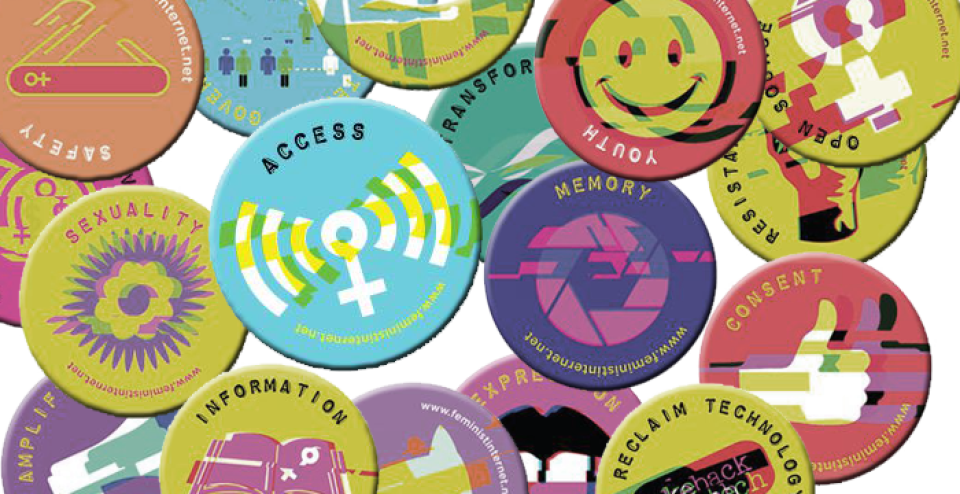
This is the final output resource produced by a community of participants in IGF best practice forum (BPF) on gender and access in 2016. This is also the second resource produced by the IGF BPF on Gender, which in 2015 published an extensive resource on online abuse and gender-based violence. The BPF Gender’s outputs are considered living resources that will be updated and changed as additional input and comments are received.
MAG coordinators: Jac SM Kee and Renata Aquino Ribeiro
Editor: Anri van der Spuy
How was this resource produced?
The IGF provides a unique platform for the collaborative work of this BPF, which aimed to collect the views of the broader Internet governance community on the topic of how to overcome barriers to enable women’s meaningful access to the Internet. The IGF strives in all of its work to provide a neutral and open platform that ensures that all interested parties in the multistakeholder Internet governance community can contribute in a bottom-up fashion.
This outcome resource was produced as a reflection of this open, iterative and bottom-up process in which people from diverse regions and stakeholder groups participated by completing a survey, attending regular virtual meetings, submitting input on the mailing list, sharing reports of relevant/linked events and workshops on gender and access, and contributing background research. This resource also contains references to discussions facilitated at regional and national IGFs’ (NRI) meetings and other events, including Brazil IGF (Fórum Brasileiro), LACIGF, APrIGF, and workshop in Bangkok, and input received during the BPF’s session at IGF 2016 in Guadalajara, Mexico.
CONTENTS
EDITOR’S NOTE 3
ACRONYMS AND ABBREVIATIONS 6
PART A: FINDINGS 7
1. INTRODUCTION 7
2. THE IMPORTANCE OF PROMOTING WOMEN’S ACCESS 9
3. FROM ACCESS TO MEANINGFUL ACCESS 11
4. TOWARDS A BETTER UNDERSTANDING OF BARRIERS 12
4.1 A NEED FOR MORE DATA 12
4.2 THE IGF BPF 2016: HELPING TO FILL THE GAPS 15
4.3 THE SIGNIFICANCE OF CONTEXT 16
5. BARRIERS TO MEANINGFUL ACCESS 19
5.1 INTRODUCTION 19
5.2 THE SIGNIFICANCE OF CULTURE AND NORMS 21
5.3 THREATS AS A BARRIER 28
5.4 RELATIVE AFFORDABILITY AND THE COST OF DEVICES AND BROADBAND 33
5.5 WOMEN’S ABILITY TO PARTICIPATE IN RELEVANT DECISION-MAKING ROLES 34
5.6 THE NEED FOR RELEVANT CAPACITIES AND DIGITAL LITERACY SKILLS 38
5.7 THE AVAILABILITY OF RELEVANT POLICIES TO PROMOTE WOMEN’S ACCESS 42
5.8 THE AVAILABILITY OF RELEVANT INFRASTRUCTURE 45
5.9 THE AVAILABILITY OF RELEVANT CONTENT AND APPLICATIONS 47
6. INITIATIVES AIMED AT OVERCOMING BARRIERS 49
7. CONCLUSIONS AND RECOMMENDATIONS 71
PART B: MANDATE AND METHODOLOGY 74
8. MANDATE 74
8.1 THE IGF 74
8.2 DEFINING THE BPF’S MANDATE 75
9. METHODOLOGY 76
9.1 METHOD FOR TASK 1: RAISING AWARENESS ABOUT BPF 2015 OUTCOME 76
9.2 METHOD FOR TASK 2: STUDYING GENDER AND ACCESS 77
10.3 BPF PARTICIPATION AT IGF 2016 86
PART C: APPENDICES 88
APPENDIX 1: CONTRIBUTORS 88
APPENDIX 2: BPF PARTICIPANT GUIDE 95
APPENDIX 3: BPF SURVEY 103
APPENDIX 4: ANALYSIS OF COMMENTS RECEIVED ON DRAFTS I & II 133
APPENDIX 5: BPF SESSION REPORT AT IGF 2016 140
MAG coordinators: Jac SM Kee and Renata Aquino Ribeiro
Editor: Anri van der Spuy
How was this resource produced?
The IGF provides a unique platform for the collaborative work of this BPF, which aimed to collect the views of the broader Internet governance community on the topic of how to overcome barriers to enable women’s meaningful access to the Internet. The IGF strives in all of its work to provide a neutral and open platform that ensures that all interested parties in the multistakeholder Internet governance community can contribute in a bottom-up fashion.
This outcome resource was produced as a reflection of this open, iterative and bottom-up process in which people from diverse regions and stakeholder groups participated by completing a survey, attending regular virtual meetings, submitting input on the mailing list, sharing reports of relevant/linked events and workshops on gender and access, and contributing background research. This resource also contains references to discussions facilitated at regional and national IGFs’ (NRI) meetings and other events, including Brazil IGF (Fórum Brasileiro), LACIGF, APrIGF, and workshop in Bangkok, and input received during the BPF’s session at IGF 2016 in Guadalajara, Mexico.
CONTENTS
EDITOR’S NOTE 3
ACRONYMS AND ABBREVIATIONS 6
PART A: FINDINGS 7
1. INTRODUCTION 7
2. THE IMPORTANCE OF PROMOTING WOMEN’S ACCESS 9
3. FROM ACCESS TO MEANINGFUL ACCESS 11
4. TOWARDS A BETTER UNDERSTANDING OF BARRIERS 12
4.1 A NEED FOR MORE DATA 12
4.2 THE IGF BPF 2016: HELPING TO FILL THE GAPS 15
4.3 THE SIGNIFICANCE OF CONTEXT 16
5. BARRIERS TO MEANINGFUL ACCESS 19
5.1 INTRODUCTION 19
5.2 THE SIGNIFICANCE OF CULTURE AND NORMS 21
5.3 THREATS AS A BARRIER 28
5.4 RELATIVE AFFORDABILITY AND THE COST OF DEVICES AND BROADBAND 33
5.5 WOMEN’S ABILITY TO PARTICIPATE IN RELEVANT DECISION-MAKING ROLES 34
5.6 THE NEED FOR RELEVANT CAPACITIES AND DIGITAL LITERACY SKILLS 38
5.7 THE AVAILABILITY OF RELEVANT POLICIES TO PROMOTE WOMEN’S ACCESS 42
5.8 THE AVAILABILITY OF RELEVANT INFRASTRUCTURE 45
5.9 THE AVAILABILITY OF RELEVANT CONTENT AND APPLICATIONS 47
6. INITIATIVES AIMED AT OVERCOMING BARRIERS 49
7. CONCLUSIONS AND RECOMMENDATIONS 71
PART B: MANDATE AND METHODOLOGY 74
8. MANDATE 74
8.1 THE IGF 74
8.2 DEFINING THE BPF’S MANDATE 75
9. METHODOLOGY 76
9.1 METHOD FOR TASK 1: RAISING AWARENESS ABOUT BPF 2015 OUTCOME 76
9.2 METHOD FOR TASK 2: STUDYING GENDER AND ACCESS 77
10.3 BPF PARTICIPATION AT IGF 2016 86
PART C: APPENDICES 88
APPENDIX 1: CONTRIBUTORS 88
APPENDIX 2: BPF PARTICIPANT GUIDE 95
APPENDIX 3: BPF SURVEY 103
APPENDIX 4: ANALYSIS OF COMMENTS RECEIVED ON DRAFTS I & II 133
APPENDIX 5: BPF SESSION REPORT AT IGF 2016 140
Publication date
Year of publication
2016
- 6640 views






Add new comment